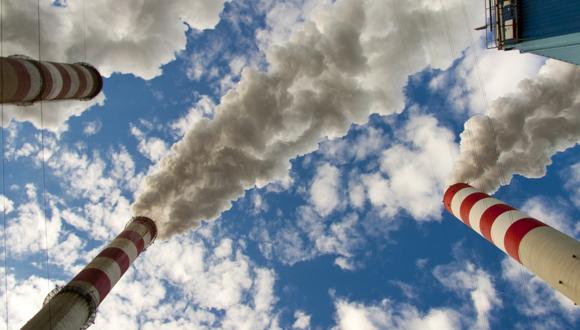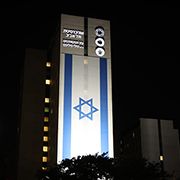TAU scientists tracking pollution from outer space
Tel Aviv University team uses NASA satellites to measure pollution hovering over world's megacities
The thickest layers of global smog — caused by traffic, industry, and natural minerals, among other factors — are found over the world's megacities. But getting an accurate measurement of pollution is no easy task. On-the-ground monitoring stations do not always provide the most accurate picture —monitoring stations depend heavily on local positioning and some cities put stations in urban centers, while others build on the edge of a city.
Now Prof. Pinhas Alpert of Tel Aviv University's Department of Geophysics and Planetary Sciences and head of the Porter School of Environmental Studies, with graduate student Olga Shvainshteinand and Dr. Pavel Kishcha, is turning to three of NASA's high-tech satellites for a comprehensive view of pollutants in the atmosphere. Using eight years' worth of data collected by the satellites, the researchers tracked pollution trends for 189 megacities — metropolitan hotspots where the population exceeds 2 million. 58 of these megacities, including New York City, Tokyo, and Mumbai, have populations that exceed 5 million.
Their method, published in the American Journal of Climate Change, is the first to provide standardized global testing of pollution levels. Beyond uncovering reliable data about pollution trends, Prof. Alpert believes that this monitoring method will also hold countries accountable for their emissions and encourage more environmentally friendly practices.
A “three judge” panel
The smog which often covers megacities is actually a thick atmospheric layer several hundred meters above the Earth's surface, comprised of particles of pollutants. It's an environmental hazard and a severe health risk for those living below, who breathe in the particulates.
To accurately analyse the level of pollution over each megacity, the researchers used data gathered by three aerosol-monitoring satellites, called MODIS-Terra, MODIS-Aqua, and MISR, which NASA launched from 2000 through 2002. The combined data these satellites provide constitute an accurate survey of aerosol concentrations a few hundred meters above Earth.
Prof. Alpert likens the use of three satellites to the traditional Jewish idea of the three-judge panel. "In the Jewish tradition, individual judges don't decide cases. There must be a minimum of three. You need a majority opinion," he says. "By merging the data from three imperfect sensors, their flaws are mostly counterbalanced. In cases where the three sensors show differing signs of pollution levels, more research is required."
Winners and losers
Northeast China, India, the Middle East, and Central Africa are currently leading in pollution increase, including Bangalore, India, with a 34 percent average increase in aerosol concentration between 2002 and 2010. Ibdan, Nigeria, was also part of that group. Europe and Northeast and Central North America are seeing the largest decreases in aerosol concentrations overall. Among the cleanest cities were Houston, with a 31 percent decrease over the time period; Curitiba, Brazil, with a 26 percent decrease; and Stockholm, Sweden, with a 23 percent decrease.
Some American cities were on the list of increased pollution levels, including Portland with a 53 percent average increase and Seattle with a 32 percent average increase, but Prof. Alpert believes these numbers reflect the multiple wildfires that have been happening in the region in the second half of the period examined. In the future, he hopes to develop a method for separating such natural causes of pollution from man-made pollutants for more accurate data.
An honest view of emissions
A standardized approach to smog analysis is made difficult by often unreliable data from monitoring stations, the reluctance of politicians or government ministries to offer accurate numbers on pollution, and even a complete lack of monitoring in major parts of the world, says Prof. Alpert. When it comes to international treaties aimed at reducing pollution, this measurement method could help to keep all countries accountable for their promises by tracking compliance in an equitable way. Cities that successfully decrease pollution could be applauded for their efforts and stand as a positive example to follow, he suggests.





